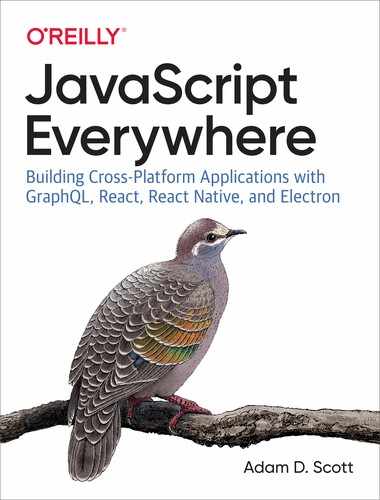Appendix A. Running the API Locally
If you’ve chosen to follow along with the UI portion of the book, but not the API development chapters, you will still need a copy of the API running locally.
The first step is to ensure that you have MongoDB installed and running on your system, as described in Chapter 1. With your database up and running, you can clone a copy of the API and copy the final code. To clone the code to your local machine, open the terminal, navigate to the directory where you keep your projects, and git clone the project repository. If you haven’t done so already, it may also be helpful to create a notedly directory to keep the project code organized:
$cdProjects# only run the following mkdir command if you do not yet have a notedly directory$mkdir notedly$cdnotedly$git clone [email protected]:javascripteverywhere/api.git$cdapi
Lastly, you’ll need to update your environment variables by making a copy of the .sample.env file and populating the information in the newly created .env file.
In your terminal, run:
$ cp .env.example .envNow, in your text editor, update the values of the .env file:
##DatabaseDB_HOST=mongodb://localhost:27017/notedlyTEST_DB=mongodb://localhost:27017/notedly-test##AuthenticationJWT_SECRET=YOUR_PASSWORD
Finally, you can start the API. In your terminal, run:
$ npm startAfter working through these instructions, you should have a copy of the Notedly API running locally on your system.
